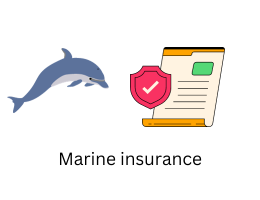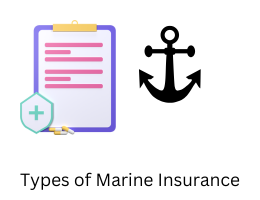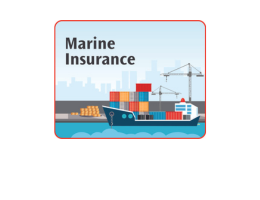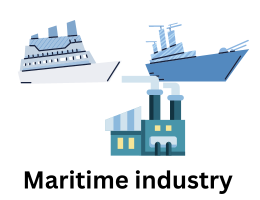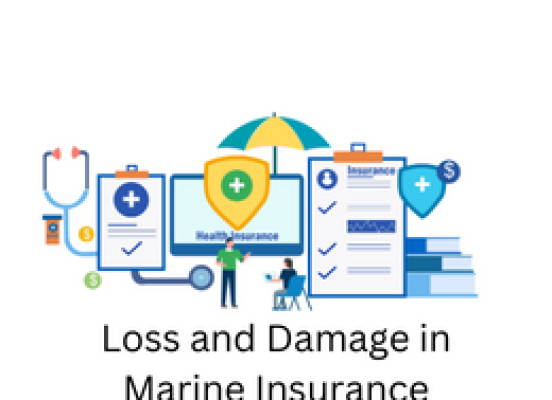
Loss and Damage in Marine Insurance
- By admin --
- Wednesday, 13 Dec, 2023
Loss and Damage in Marine Insurance: Navigating the Depths of Risk and Compensation
Marine insurance is a complex and crucial aspect of the shipping industry, providing financial protection against the uncertainties and perils inherent in maritime activities. Loss and damage are inevitable elements in the maritime domain, and understanding how they are addressed within the realm of marine insurance is fundamental to managing risks effectively.
Causes of Loss in Marine Insurance:
Marine losses can be attributed to a variety of factors, ranging from natural perils to human-related incidents. The primary causes include perils of the sea, fire, collision, sinking, piracy, theft, and damage during loading or unloading. Each of these events poses unique challenges, requiring a nuanced approach to risk assessment and coverage.
Perils of the Sea: The vastness and unpredictability of the sea make it a formidable force. Storms, rough seas, and other natural occurrences can lead to significant damage to vessels and their cargo. Marine insurance policies often cover losses arising from perils of the sea, acknowledging the inherent risks associated with maritime navigation.
Fire and Explosion: Fire is a constant threat on ships due to the presence of flammable cargo, machinery, and fuel. A fire outbreak can lead to catastrophic losses, and marine insurance provides coverage for such events. Explosion risks, often linked to combustible cargo or engine malfunctions, are also considered in the underwriting process.
Collision and Grounding: Collisions between vessels or with other maritime structures are common occurrences at sea. Additionally, grounding accidents, where a ship runs aground, can result in substantial damage. Marine insurance policies address the financial implications of such incidents, covering repair costs and potential liability claims.
Theft and Piracy: Maritime piracy remains a persistent threat in certain regions. Pirates may hijack vessels or steal cargo, causing financial losses to shipowners and insurers. Marine insurance includes provisions to compensate for theft-related damages, and policies often have specific clauses related to piracy.
Salvage Operations and Their Impact on Claims:
When a marine incident occurs, salvage operations may be initiated to prevent further damage or environmental harm. Salvors, entities specialized in rescuing distressed vessels and cargo, play a critical role in these operations. The costs incurred during salvage efforts are considered in the claims settlement process. Marine insurance policies may cover salvage expenses, which can include fees for salvors, equipment usage, and other associated costs.
The concept of general average further complicates the aftermath of certain marine incidents. General average occurs when sacrifices or expenditures are made for the common safety of the ship and cargo. In such cases, all parties involved proportionally share the losses. Marine insurance policies often include provisions for general average contributions, requiring the insured parties to contribute to the overall cost of the sacrifice or expenditure made to safeguard the entire venture.
Claims Settlement Process in Marine Insurance:
The claims settlement process in marine insurance involves a series of steps to ascertain the extent of the loss and determine the compensation owed to the insured. When a loss occurs, the insured party, typically the shipowner or cargo owner, must promptly notify the insurer and provide detailed information about the incident.
-
Notice of Loss: The insured submits a formal notice of loss to the insurance company, outlining the details of the incident, such as the date, time, location, and nature of the loss.
-
Survey and Assessment: Insurance adjusters or surveyors are appointed to assess the extent of the damage. They examine the vessel, cargo, and any relevant documentation to determine the cause and value of the loss.
-
Documentation: Complete and accurate documentation is crucial in the claims process. The insured must provide supporting documents, such as the bill of lading, survey reports, and any other relevant paperwork.
-
Adjustment and Settlement: Once the assessment is complete, the insurer and the insured negotiate the terms of settlement. The insurer considers the coverage limits, deductibles, and policy terms in determining the compensation amount.
-
Payment: Upon agreement, the insurer disburses the agreed-upon compensation to the insured. The payment covers the repair or replacement costs, salvage expenses, and any other covered losses.
Emerging Trends in Loss Management:
In recent years, the landscape of marine insurance has been influenced by emerging trends and challenges. Technological advancements, climate change, and evolving risks have prompted the industry to adapt and innovate in the realm of loss and damage management.
Use of Technology: Technological innovations, such as the Internet of Things (IoT) and blockchain, are reshaping the landscape of marine insurance. IoT devices on vessels can provide real-time data on conditions, enabling insurers to monitor risks more accurately. Blockchain technology facilitates transparent and secure transactions, streamlining claims processing and reducing fraud.
Impact of Climate Change: Climate change has introduced new risks in the maritime sector, including more frequent and severe weather events, rising sea levels, and changes in navigation patterns. Insurers are adjusting their risk models to account for these climate-related factors and developing new products to address emerging challenges.
Cyber Risks: The increasing digitization of maritime operations exposes the industry to cyber risks. From navigation systems to cargo tracking, various aspects of shipping are now reliant on digital technologies. Marine insurance policies are evolving to include coverage for cyber risks, such as data breaches and system malfunctions, which can lead to financial losses.
Understanding the multifaceted nature of loss and damage in marine insurance is essential for all stakeholders in the shipping industry. From shipowners and cargo owners to insurers and underwriters, a comprehensive grasp of the risks and the mechanisms in place for compensation ensures the resilience and sustainability of maritime ventures in the face of uncertainties. As the industry continues to evolve, the synergy between traditional practices and innovative approaches will play a pivotal role in shaping the future of marine insurance.


